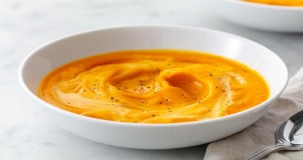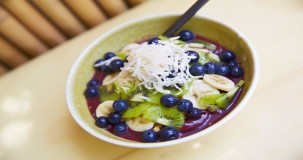 Lifestyle
Lifestyle
 Blogs
Blogs
 Blogs
Blogs
 Blogs
Blogs
 Baby
Baby
 Baby
Baby
 Baby
Baby
 Baby
Baby
 Lifestyle
Lifestyle
What are the differences 3 basic types of salad dressing? Discover the key differences among the three fundamental types of salad dressing. Explore the unique flavors and ingredients that make each one distinct in this informative blog.
Vinaigrette dressings are known for their light and tangy flavors. They are essentially a mixture of oil and vinegar, blended together with various herbs, spices, and other flavorings. Vinaigrettes are popular for their versatility and ability to pair well with a wide range of salad ingredients.
The key characteristics of vinaigrette dressings include:
1. Oil and Vinegar Base: Vinaigrettes are primarily made with a mixture of oil and vinegar. Olive oil is one of the most commonly used oils, but other oils such as vegetable or nut oils can also be used. The vinegar can vary, including options like red wine vinegar, balsamic vinegar, or apple cider vinegar.
2. Tangy Flavor: The acidic nature of the vinegar gives vinaigrettes their characteristic tangy flavor. This tanginess is balanced with the richness of the oil, creating a harmonious taste.
3. Light Consistency: Vinaigrettes have a thin consistency that allows them to coat the salad ingredients evenly. This quality helps enhance the flavors without overpowering the freshness of the greens and other salad components.
Creamy DressingsCreamy dressings provide a smooth and rich texture to salads, making them a favorite among many. These dressings are typically made with a base of mayonnaise, sour cream, or yogurt, blended with various flavorings and seasonings.
The key characteristics of creamy dressings include:
1. Thick and Creamy Texture: As the name suggests, creamy dressings have a thick and smooth texture that adds a luxurious feel to salads. The richness of the dressing complements the crispness of the greens and crunchy salad toppings.
2. Rich and Savory Flavors: Creamy dressings are known for their rich and savory flavors. Ingredients like garlic, mustard, herbs, and spices are often added to enhance the taste profile.
3. Coating Ability: Creamy dressings cling well to salad ingredients, providing a full coating of flavor in each bite. This feature makes them ideal for salads that include heartier ingredients such as roasted vegetables, grilled chicken, or cheese.
Emulsified DressingsEmulsified dressings combine the best of both worlds, combining the lightness of vinaigrettes with the creaminess of creamy dressings. These dressings achieve their emulsified texture by stabilizing the mixture of oil and vinegar or other acidic components using an emulsifying agent, such as mustard or egg yolk.
The key characteristics of emulsified dressings include:
1. Homogeneous Texture: Emulsified dressings have a smooth and homogeneous texture, thanks to the stable emulsion created between the oil and vinegar. This creates a balanced consistency throughout the entire dressing.
2. Combination of Flavors: Emulsified dressings often blend the tanginess of vinegar with the creaminess of mayonnaise or oil. The result is a well-rounded flavor profile that adds depth to salads.
3. Versatility: Emulsified dressings can be adapted to suit various flavor preferences by adding different herbs, spices, and seasonings. This versatility allows them to complement a wide array of salads and ingredients.
In conclusion, salad dressings add flavor, texture, and personality to any salad. Whether you prefer the tangy freshness of vinaigrettes, the richness of creamy dressings, or the harmonious combination of emulsified dressings, there is a dressing out there to suit every taste and salad combination.
The three basic types of salad dressing are vinaigrette, creamy, and emulsified dressings. 2. How is vinaigrette dressing different from creamy dressing?
Vinaigrette dressing is made by combining oil, vinegar, and seasonings, while creamy dressing typically includes ingredients like mayonnaise, sour cream, or yogurt to achieve a creamy texture. 3. What is an emulsified dressing and how is it different from vinaigrette and creamy dressings?
An emulsified dressing is a type of dressing where oil and vinegar are combined and mixed together using an emulsifier, such as mustard or egg yolk. This creates a thicker and more stable dressing compared to vinaigrettes or creamy dressings. 4. What are some examples of vinaigrette dressings?
Examples of vinaigrette dressings include balsamic vinaigrette, red wine vinaigrette, and lemon vinaigrette. These dressings typically have a tangy and acidic flavor profile. 5. Can you give some examples of creamy dressings?
Some examples of creamy dressings include ranch, Caesar, and blue cheese dressings. These dressings tend to be rich, smooth, and have a creamy consistency.
 LATEST ARTICLES
LATEST ARTICLES

Am I a Millennial or Gen Z?

Am I bloated or fat?

Am I dehydrated or sick?

Are babies born with ADHD?

Are babies born geniuses?

Are babies born in September smarter?

Are babies actually talking when they babble?

What are 3 signs of a toxic relationship?

What are 10 signs of a toxic relationship?

Am I in a toxic relationship?

How do you find red flags in a toxic relationship?

Am I bloated or pregnant?

Am I bloated or showing at 9 weeks?

Am I bloated or showing at 10 weeks?

Am I bloated or showing at 7 weeks?

Are acai bowls just smoothies?

Are all pumpkins good for soup?

Are acai bowls healthy or unhealthy?

Are air fried potatoes healthy?

Are albondigas the same as meatballs?

Am I being Gaslit or am I the gaslighter?

Am I bloated or did I gain weight?

Am I allergic to vodka?
 POPULAR ARTICLES
POPULAR ARTICLES

Am I a Millennial or Gen Z?

Am I bloated or fat?

Am I dehydrated or sick?

Are babies born with ADHD?

Are babies born geniuses?

Are babies born in September smarter?

Are babies actually talking when they babble?

What are 3 signs of a toxic relationship?

What are 10 signs of a toxic relationship?

Am I in a toxic relationship?